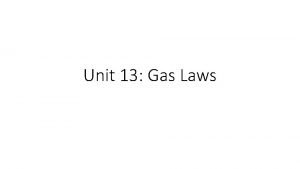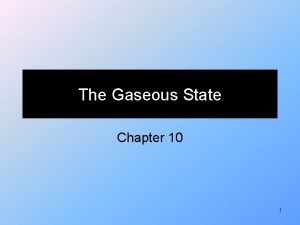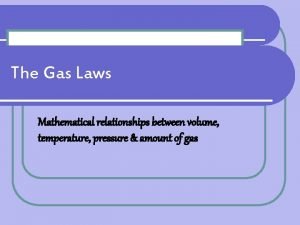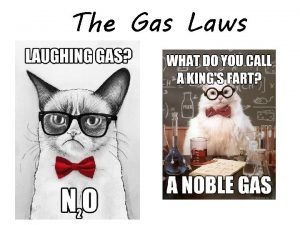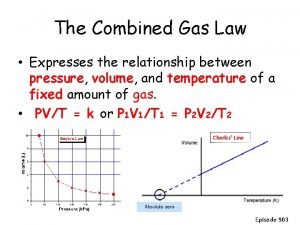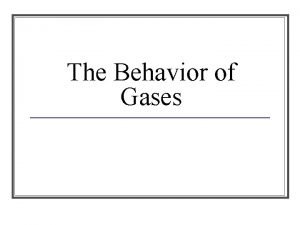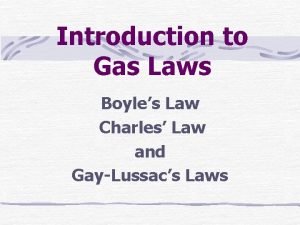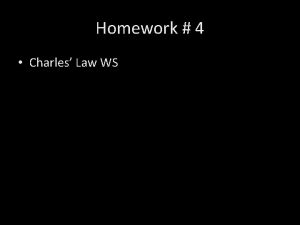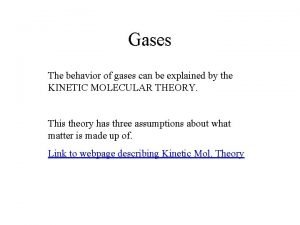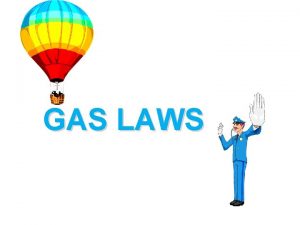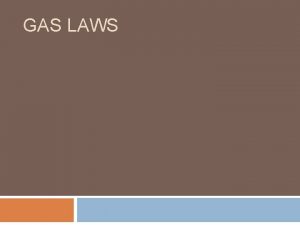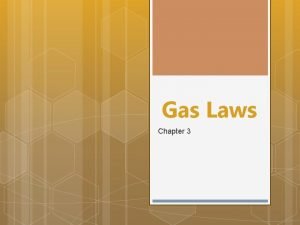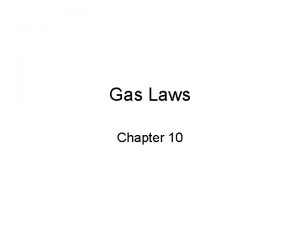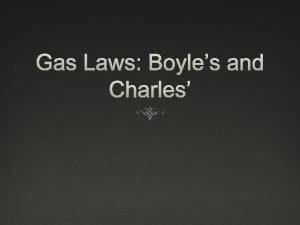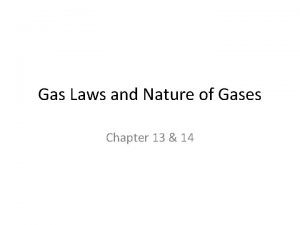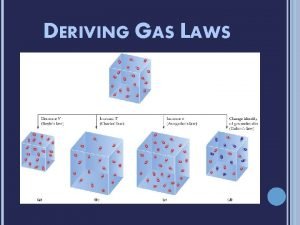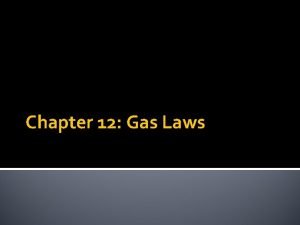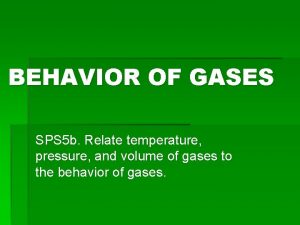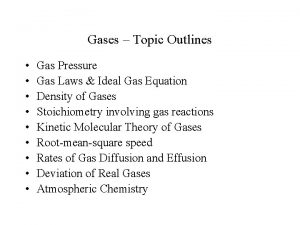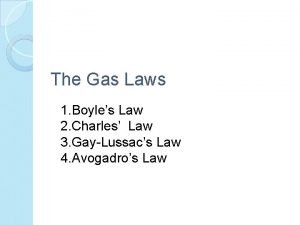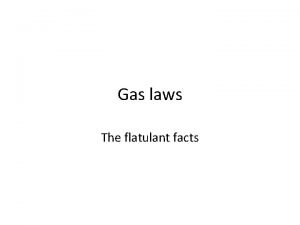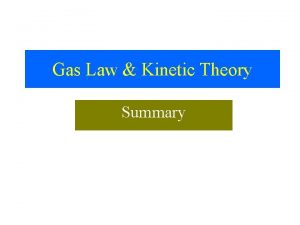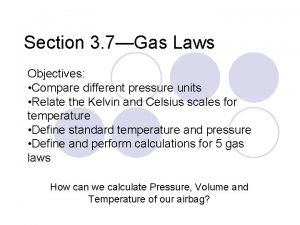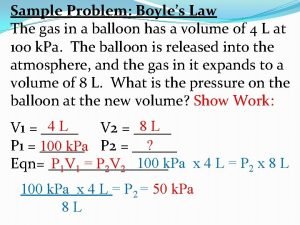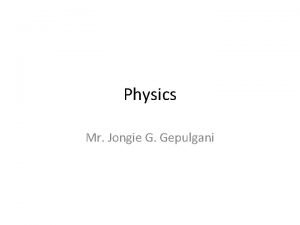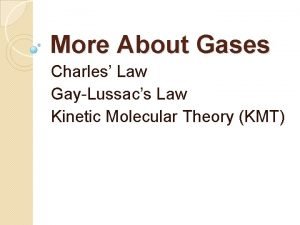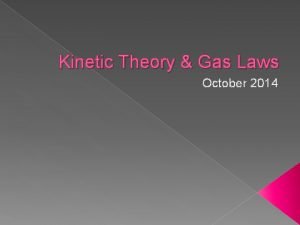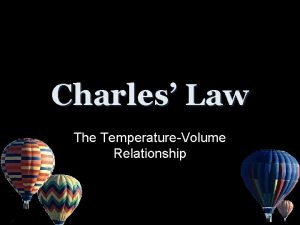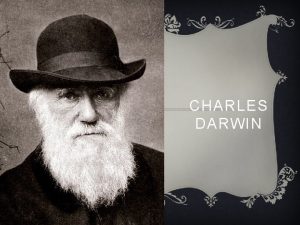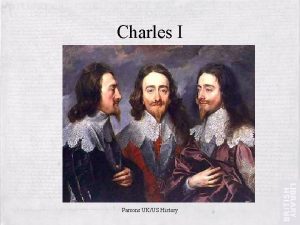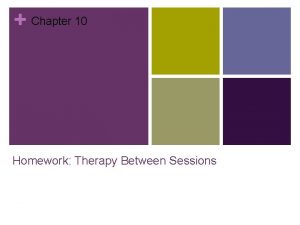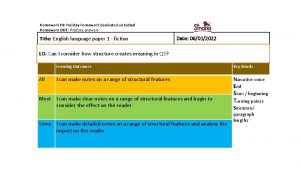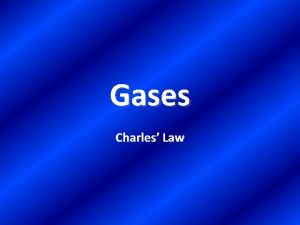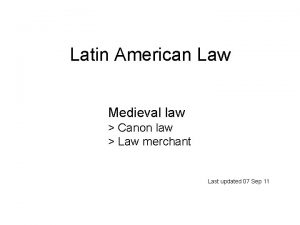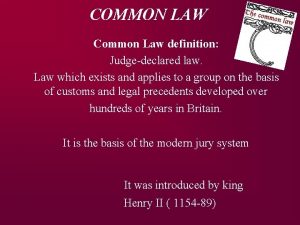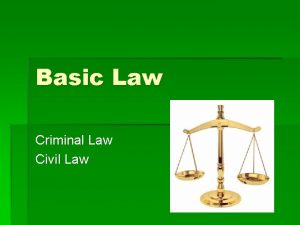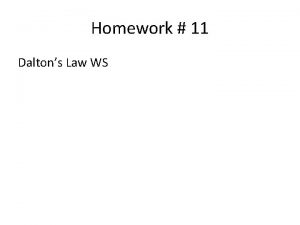Homework 4 Charles Law WS Aim 4 How








































- Slides: 40

Homework # 4 • Charles’ Law WS

Aim 4: How is the volume of a gas affected when the temperature of the gas is changed?

Table T

Charles’s Law • Discovered by French physicist, Jacques Charles in 1787

The relationship between temperature and volume

Do gases get heavier or lighter as their temperature rise?

Jacques Charles (1746 -1823) In the century following Boyle, a French physicist, Jacques Charles was the first person to fill a balloon with hydrogen gas and who made the first solo balloon flight.

If the temperature of a gas is increased, will its volume increase or decrease? Why?

Increasing the temperature: • Increases the kinetic energy • Increases collision (molecules collide more frequently!) • Increase the rate of reaction!

TEMPERATURE BALLOON IN A CUP OF HOT WATER BALLOON IN A CUP OF COLD WATER

So, when the temperature of the gas increases its volume also increases. • What type of relationship exist between temperature and volume?

What is a direct relationship? This is where the two variables do the same thing. If own increases so does the other and vice versa.

You need a calculator: How do you change -150 o. C to kelvin? See table T: K = ºC + 273

Charles’s Law See table T: K = ºC + 273 Temperature (o. C) Temperature (K) Volume 1 - 150 100 2 -100 141 3 -50 181 4 0 222 5 50 263 6 100 303 7 150 344

Charles’s Law Temperature (C) Temperature (K) Volume 1 - 150 123 100 2 -100 173 141 3 -50 223 181 4 0 273 222 5 50 323 263 6 100 373 303 7 150 423 344

Charles’s Law Temperature (K) Volume 1 123 100 2 173 141 3 223 181 4 273 222 5 323 263 6 373 303 7 423 344

1. Charles’s Law states that at constant pressure, volume is directly proportional to Kelvin temperature.

In math, how do you graph a direct relationship?


2. Charles’ Law: Volume vs Temperature “Direct relationship” T E M P E R A T U R E VOLUME

3. Combined Gas Law: See table T

4. Charles’ Law: “At constant Pressure” “cancel out pressure” P 1 V 1 = P 2 V 2 T 1 T 2 V 1 = V 2 T 1 T 2

V 1 = V 2 T 1 T 2 Solve V 2 =V 1 x T 2 T 1

V 1 = V 2 T 1 T 2 Solve V 1 = V 2 x T 1 T 2

V 1 = V 2 T 1 T 2 Solve T 1 V 1 T 2 =V 2 x T 1 V 1 T 2 = T 1 V 2 Cross multiply:

Test Your Understanding

1. At 200 K, the volume of a gas is 100 m. L. The temperature is raised to 300 K. What is the new volume? Step 1: Data V 1= 100 m. L. T 1= 200 K V 2= X T 2= 300 K

V 1 = V 2 T 1 T 2 Step 2: Set up the problem: identify the data 100 m. L = V 2 200 K 300 K

Step 3: Cross multiply 100 m. L = V 2 200 K 300 K 100 m. L x 300 K = V 2 x 200 K

Step 4: Solve V 2 100 m. L x 300 K = V 2 x 200 K 200 K 100 m. L x 300 = V 2 200 V 2= 150 m. L

V 1 = V 2 T 1 T 2 V 2 =V 1 x T 2 T 1

Solve V 2 100 m. L x 300 K = V 2 200 K 100 m. L x 300 = V 2 200 V 2= 150 m. L

2. A sample of a gas at 15°C has a volume of 2. 58 m. L. What volume will the gas occupy at 38°C ? Step 1: Data V 1= 2. 58 m. L V 2= X T 1 = 15 ºC T 2= 38 ºC

Remember: Temperature in Kelvin! Convert ºC to K ( See table T) K = ºC + 273 K = 15 + 273 = 288 K (Temperature 1) K = 38 + 273 = 311 K (Temperature 2)

Data: V 1= 2. 58 m. L V 2= X T 1 = 15 ºC = 288 K T 2= 38 ºC= 311 K

Step 2: Set up the problem 2. 58 m. L = V 2 288 K 311 K Step 3: Cross multiply 2. 58 m. L x 311 K = V 2 x 288 K

Step 4: Solve V 2 2. 58 m. L x 311 K = V 2 x 288 K 288 K Step 5: 2. 58 m. L x 311 = V 2 288 Step 6: V 2 = 2. 79 m. L

Data: V 1= 0. 50 L T 1= 20 o. C= 293 K V 2= X T 2= 37 o. C= 310 K

V 1 = V 2 T 1 T 2 0. 50 L = __X__ 293 K 310 K 0. 50 L x 310 K = 293 X 0. 50 L x 310 K = 293 K� X 293 K

END
 V=k/p
V=k/p Constant in avogadro's law
Constant in avogadro's law Jack prelutsky homework oh homework
Jack prelutsky homework oh homework Homework oh homework i hate you you stink
Homework oh homework i hate you you stink Jack prelutsky homework oh homework
Jack prelutsky homework oh homework Homework i love you poem
Homework i love you poem Homework oh homework i hate you you stink
Homework oh homework i hate you you stink Grant always turns in his homework
Grant always turns in his homework Charles manson childhood
Charles manson childhood Newton's first law and second law and third law
Newton's first law and second law and third law Newton's first law of motion
Newton's first law of motion Graham's law real life example
Graham's law real life example Charles law
Charles law Pressure and volume relationship formula
Pressure and volume relationship formula Is boyle's law a direct or indirect relationship
Is boyle's law a direct or indirect relationship Gas laws
Gas laws Relationships between pressure volume and temperature
Relationships between pressure volume and temperature Charles law examples
Charles law examples Charles's law
Charles's law Jacques charles law
Jacques charles law Mathematical expression of boyle's law
Mathematical expression of boyle's law Avogrados law
Avogrados law Charles law real life application
Charles law real life application Charles law real life example
Charles law real life example Pressure and volume inversely proportional
Pressure and volume inversely proportional Temperature to volume relationship
Temperature to volume relationship Chapter 13 gas laws worksheet answer key
Chapter 13 gas laws worksheet answer key Derivation of charles law
Derivation of charles law Avogadro law
Avogadro law Boyle's law in real life
Boyle's law in real life State avogadro's law
State avogadro's law How to remember charles and boyle's law
How to remember charles and boyle's law Charles law facts
Charles law facts Charles law in terms of kinetic molecular theory
Charles law in terms of kinetic molecular theory Empirical gas laws
Empirical gas laws Charles law example problem
Charles law example problem Sample problem of boyle's law
Sample problem of boyle's law Charles law examples
Charles law examples Charles law
Charles law Charles law
Charles law Explain using the gas law how hot air balloon works
Explain using the gas law how hot air balloon works











